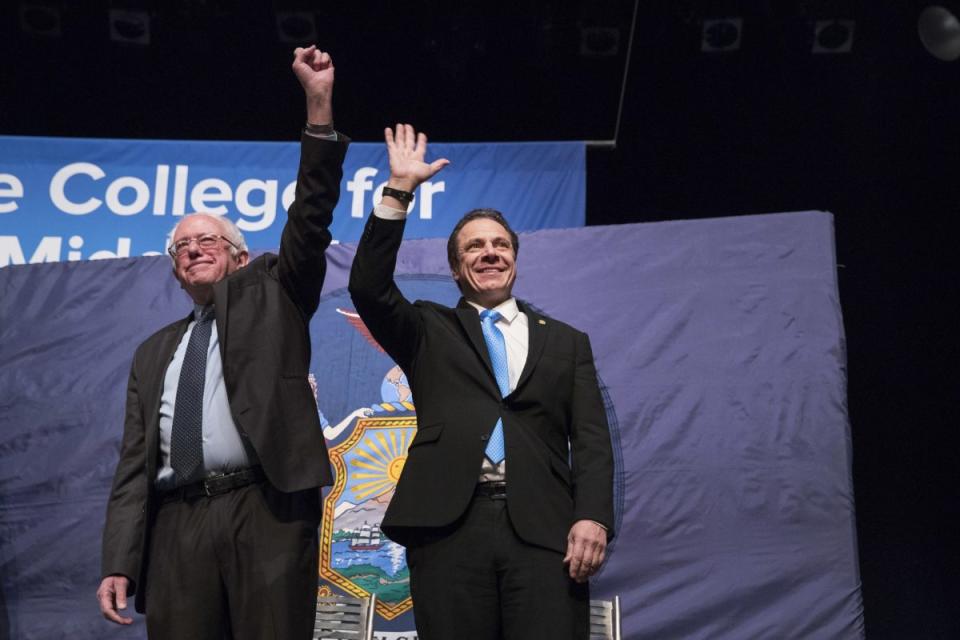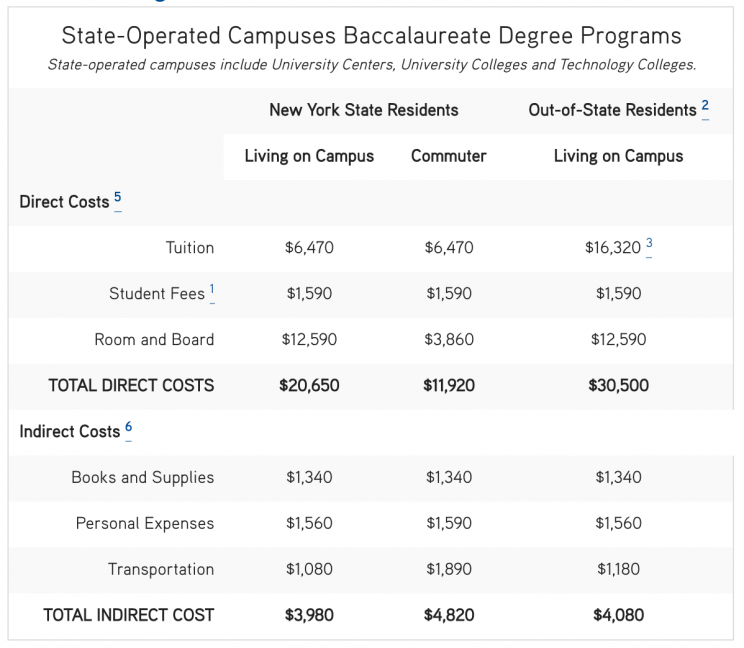New York could enact one of the biggest-ever free college tuition programs

New York Governor Andrew Cuomo is attempting to make college tuition-free at state universities for hundreds of thousands of low- and middle-income students.
The scheme, the first of its kind in the nation, is known as the Excelsior Scholarship. Students from families earning less than $125,000 per year would be eligible for a tuition-free education at any city or state university, including two-year colleges.
The Governor’s Office says students from around 940,000 families would be eligible to participate in the program, which still requires legislative approval. An estimated 200,000 students would take part — at a cost of $163 million a year — if fully enacted in 2019.
During the announcement last week, the governor noted that 70 percent of jobs in the state require a degree.
“What high school was 75 years ago, college is today,” Cuomo said. “College is a mandatory step if you really want to be a success.”

Even with skyrocketing prices, a recent report by The College Board found that college pays for itself after about 12 years. College graduates earn on average approximately $400,000 more than a high school graduate over the course of their careers.
Gov. Cuomo revealed the plan alongside former Democratic presidential candidate Bernie Sanders last week. The Vermont senator was a fierce critic of the rising cost of college and mounting student debt.
Some who agree with the idea say Gov. Cuomo’s plan doesn’t go as far as plans proposed by Sanders or even his primary opponent Hillary Clinton.
Matt Chingos, a senior fellow at the Urban Institute, claimed in a Washington Post op-ed that the scheme does not provide any benefits to low-income students, whose tuition is already covered by existing grants.
“Sanders and Clinton proposed eliminating tuition while letting students keep their existing grant aid, such as the Pell grants received by low-income students,” Chingos wrote. “But Cuomo has proposed only covering the difference between tuition and students’ existing aid, meaning that those who get the most aid benefit the least from the proposal.”
Additionally, tuition and fees make up only a small portion of the total cost of attending college. A State University of New York estimate found that on-campus students would face an additional $16,570 in annual expenses.

Also among the critics of the plan: private universities. Multiple school officials told the New York Post they fear the plan will hinder enrollment at their schools, which compete with public universities for the same students.
Kevin Cavanagh, executive vice president of strategic planning at the College of New Rochelle, told the Post, “We’ve been already competing with those colleges on costs. Families are making their decision on the bottom line and value.”

 Yahoo Finance
Yahoo Finance 